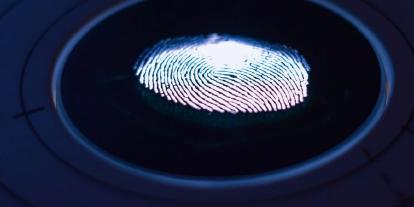Discover the Dangers of Computer Viruses: Protect Yourself Now
In the digital age, computer viruses are a major threat to your data and devices. It’s important to understand what computer viruses are, how they spread, and how to protect your data from them.
In this blog post, we’ll discuss the different types of computer viruses, how to recognize them, and the best practices you should follow to ensure that your data is safe from malicious viruses.
What is a computer virus?
A computer virus is malicious code designed to replicate itself and spread from one computer to another. It spreads through various means, such as email attachments, instant messages, or malicious websites.
It is important to note that not all viruses are malicious — some are harmless and used for testing or educational purposes.
In general, computer viruses can be divided into two categories:
- Malware or malicious software is designed to damage your computer or data.
- Spyware or tracking software is designed to steal your data or track your online activities.
Computer viruses can cause a variety of problems, ranging from minor annoyances to major system failures. They can delete or corrupt data, steal information, or even take control of your computer.
Types of computer viruses
There are many different types of computer viruses, but they can generally be divided into three main categories:
-
Worms: These are self-replicating computer viruses that can spread quickly to other computers. They can spread through email attachments, instant messages, and malicious websites.
-
Trojans: These are malicious computer viruses that are disguised as legitimate programs. They can be installed on your computer without your knowledge and are designed to steal your data or give hackers access to your system.
-
Rootkits: These are computer viruses that are designed to hide on your computer and evade detection. They can be used to gain access to your system and steal data or cause damage.
How computer viruses spread
Computer viruses can spread in a variety of ways, including:
- Email attachments: One of the most common ways for viruses to spread is through email attachments. If a user opens an attachment that contains a virus, the virus can infect the user’s computer.
- Downloading infected files: Viruses can also spread through the download of infected files from the internet, such as music files, video files, or software programs.
- Visiting infected websites: Visiting websites that have been infected with viruses can also result in the infection of a user’s computer.
- Removable media: Viruses can also be spread through the use of removable media, such as USB drives or CDs if an infected device is inserted into a computer.
- Network sharing: In a business or corporate setting, viruses can spread through the sharing of files or resources on a network.
It is critical for users to be cautious when opening emails or downloading files from the internet and to ensure that their antivirus software is up to date to protect against the spread of viruses.
Signs of a computer virus
One of the most common signs of a computer virus is an unexpected slowdown in your computer’s performance. If your computer is suddenly running slower than usual, it could be due to a virus.
Another sign of a computer virus is the presence of pop-up windows or ads. If you are suddenly seeing pop-ups or ads that you don’t remember seeing before, it could be a sign that your computer is infected with a virus.
You might also notice that your computer is running programs or applications you do not remember installing.
Finally, you might also notice files or folders on your computer that you do not remember creating.
How to remove computer viruses
There are several steps that you can take to remove a computer virus:
- Run a virus scan: The first step in removing a virus is to run a full virus scan on your computer. It can be done using antivirus software designed to detect and remove viruses.
- Disconnect from the internet: To prevent the virus from spreading or downloading additional malware, it is a good idea to disconnect your computer from the internet until the virus is removed.
- Restart in Safe Mode: Restarting your computer in Safe Mode can help to prevent the virus from running and make it easier to remove. To do this, restart your computer and press the F8 key repeatedly until the Advanced Boot Options menu appears. From there, select Safe Mode and press Enter.
- Delete temporary files: Temporary files and folders can sometimes harbor viruses, so it can be helpful to delete these files to help remove the virus.
- Use a malware removal tool: In some cases, it may be necessary to use a specialized malware removal tool to fully remove the virus. These tools are designed to identify and remove malware that may not be detected by antivirus software.
- Reinstall any affected programs: If the virus has infected any of your programs, it may be necessary to reinstall these programs to fully remove the virus.
- Run a system restore: If the virus has caused significant damage to your system, it may be necessary to run a system restore to revert your computer to a previous state. It can help to remove the virus and restore your system to its previous functioning state.
It is important to note that removing a virus can be a complex process and may require the assistance of a trained professional. If you are not sure how to proceed, it may be a good idea to seek the help of a computer repair specialist.
How to prevent computer viruses
There are several steps that you can take to prevent computer viruses:
- Install antivirus software: One of the most effective ways to prevent viruses is to install antivirus software on your computer. This software is designed to detect and block viruses, and to remove any viruses that may have already been downloaded onto your system.
- Keep your operating system and software up to date: Ensuring that your operating system and software are up to date can help to prevent viruses. Many updates include security patches that can protect against known viruses.
- Be cautious when opening emails and downloading files: One of the most common ways for viruses to spread is through email attachments and downloaded files. Be careful when opening emails, particularly if they are from an unknown sender, and only download files from reputable sources.
- Don’t click on links in emails or on websites: Avoid clicking on links in emails or on websites, as these can sometimes be used to spread viruses.
- Use a firewall: A firewall can help to prevent unauthorized access to your computer and can help to protect against viruses.
- Don’t use pirated software: Using pirated software can increase your risk of downloading a virus, as these programs are often infected with malware.
By following these steps, you can help to protect your computer against viruses and keep it running smoothly.
How to back up your data
It is essential to back up your data in case your computer does get infected with a virus. You should back up your data regularly, either to an external hard drive or to the cloud.
If your computer does become infected with a virus, you can then restore your data from the backup. It will help to minimize any damage caused by the virus.




